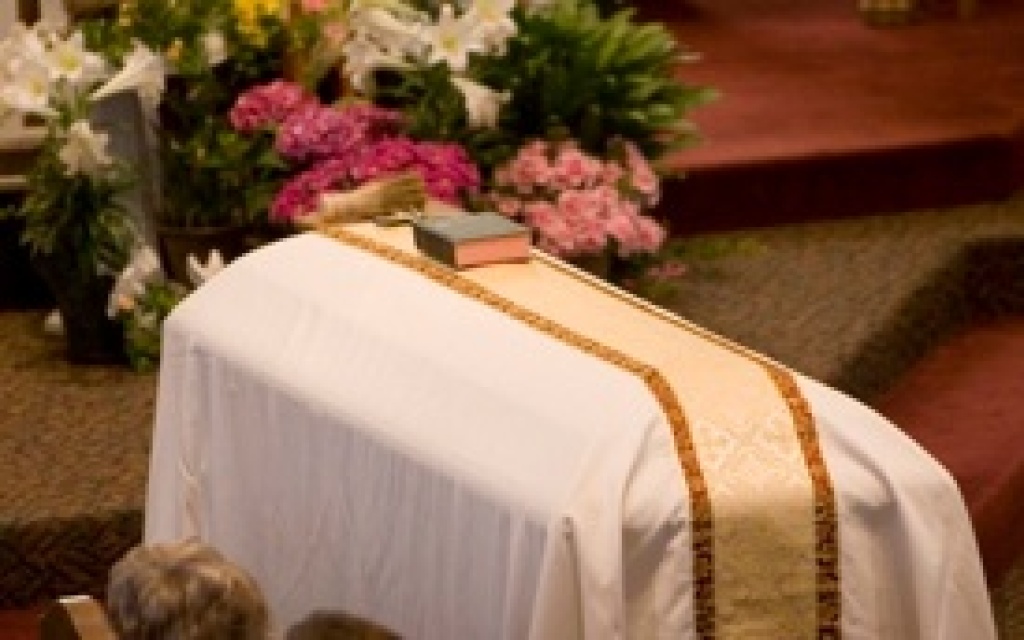
The Catechism of the Catholic Church tells us that all of the sacraments have as their goal the Passover of the child of God, through death, into Eternal Life. For the Christian, the day of death inaugurates the fulfillment of the new birth begun at Baptism. “The Church who, as Mother, has borne the Christian sacramentally in her womb during his earthly pilgrimage, accompanies him at his journey's end, in order to surrender him ‘into the Father's hands.’ She offers to the Father, in Christ, the child of His grace, and she commits to the earth, in hope, the seed of the body that will rise in glory” (Par. 1683, Catechism of the Catholic Church).
The Order of Christian Funerals provides three types of liturgical celebrations that correspond to where they are celebrated (the home, the Church and the cemetery).
The Vigil
The Vigil is the first gathering of family and friends after the death of a loved one. Historically this gathering occurred in the home. Relatives and friends kept vigil by the deathbed, prepared the body for burial and kept watch until time of the funeral. In more recent times, the vigil has taken place at a funeral home or the Church.
At the visitation, mourners gather to pay respects, pray, share stories and memories, and support the surviving family. Often, photos and other meaningful items from significant moments in life are put on display. The vigil prayer takes place within the visitation. It can take the form of a liturgy of the Word or evening prayer, and can be simple or elaborate.
The Mass of Christian Burial
This liturgy is the central celebration of the Christian community for the deceased and the mourners. In the funeral liturgy, the Church’s love and care for the deceased – as well as its trust and belief in the resurrection – are acted out. The funeral liturgy focuses on the Paschal Mystery of Jesus Christ, through the Liturgy of the Word and the Eucharist.
The Mass of Christian Burial includes a procession of the body, blessing with holy water and covering the casket with a white funeral pall. This is followed by the liturgies of the Word and Eucharist, and concluding prayers and song. In the liturgy we move from our physical relationship with the deceased to a spiritual one, as our loved one is committed into the Lord’s care.
The Rite of Committal
This rite is the community’s final farewell to the deceased, where we commit our loved one to burial or entombment in the hope of the resurrection. The Rite of Committal makes use of Scripture, intercessions and prayers. “Through this act the community of faith proclaims that the grave, or place of interment, once a sign of futility and despair, has been transformed by means of Christ’s own death and resurrection into a sign of hope and promise” (Order of Christian Funerals 209).
The blessed ground of a Catholic cemetery is a most fitting resting place for someone whose body was a Temple of the Holy Spirit. To be laid to rest in a holy place with fellow believers is a powerful statement of faith in Christ and His Resurrection.

